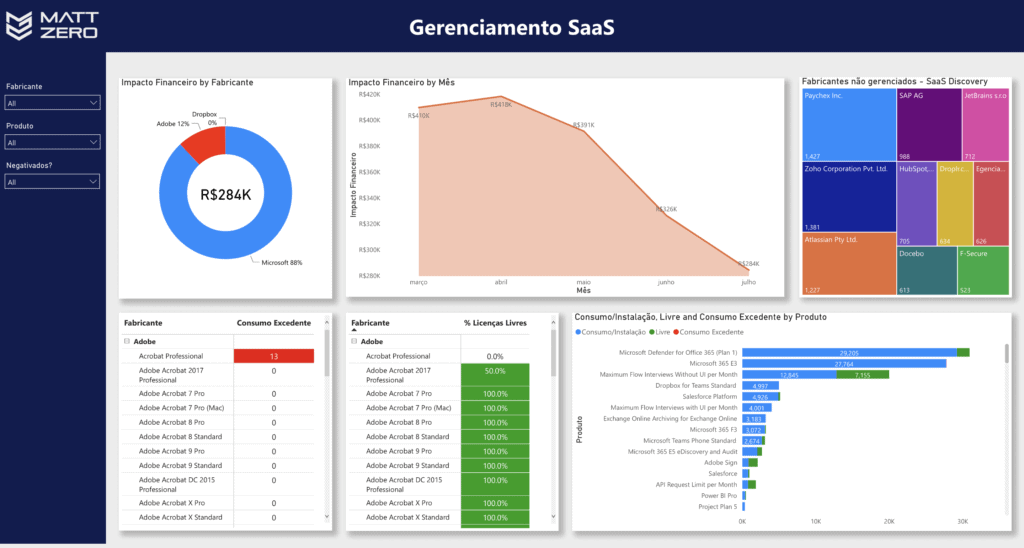When looking for software to support daily work, users today have more options than ever before. But with that freedom comes a whole new set of challenges for IT teams.

At the beginning of the pandemic, companies made extraordinary efforts to remain active and, above all, productive. The workforce went home and IT got busy with new collaboration tools and cloud apps to support the new normal.
This rush to the cloud explains, at least in part, why worldwide spending on public cloud services is expected to reach US$ 600 billion by 2023 – an increase of more than 21% over 2022, according to Gartner.
Inside from Gartner's forecast , they also point out that the SaaS remains the largest market segment, with a forecast to reach US$ 208.8 billion. Any doubts corporate IT may have had about reliance on the cloud before 2020 kicked off with the onset of COVID-19.
IT basically gave its users a ticket "open bar" technologies, a year later, organizations are asking: do we still need the "open bar"? Or can we be satisfied with the few things we need and not waste it?
Spending optimization
The collaboration tools that have proven so valuable to keeping businesses connected — Zoom, Teams, Slack, Skype and others — have likely been integrated with unlimited subscriptions. But now it's time to question those expensive subscriptions and look for ways to optimize the SaaS spending.
A common example of this is if your organization relies on Microsoft 365, you also have Teams. In this case, is Zoom also necessary? Likewise, if you're a Salesforce customer and use Skype or Teams, consider using Slack, given Salesforce's purchase of Slack late last year.
These and other examples illustrate the opportunity to optimize your SaaS investments . Every IT budget could be streamlined, but another critical consideration often overlooked has to do with your data. Where are they? And how will you access it if you decide to cancel your SaaS subscription and use that service?
Managing data in silos
When it comes to doing everyday work, users have more options than ever before. This includes numerous applications that can be accessed from the company's device, or from any personal email addresses, on the company's device. The lines were even more blurred this year as people did what they could to do their work at home and away at Home Office. While choice keeps people productive and happy through the flexibility, it can also create complications and chaos. Eventually, choice can kill productivity and not nurture it, as we imagined before.
Many of us work a lot on a document, save it and close it, and forget where we put it. Is it on OneDrive? Sharepoint? Maybe all the documentation is still in Slack or even in your email archive?
Keeping your hands on your data is a challenge, and this common reality is only magnified when you consider it from a corporate perspective. Whether it's customer information, intellectual property or anything else, data tracking is extremely important. Just ask your DPO's, responsible for the LGPD.
The introduction of many SaaS applications leads to confusion about how they should be used in an enterprise environment. They also create siled data. Many of us rely on Dropbox, for example – both personal and business versions. While it's an effective collaboration tool, it also hosts all the valuable data you've stored there. And if in your decision to optimize your SaaS expansion, you decide that Dropbox will no longer be used, extracting all that data is not a pleasant task. But if you don't, Dropbox will delete it.
Introducing SaaS Governance
Data silos are a real problem, and they increase as the number of apps your users rely on grows. The need for a real technological intelligence — or a clear line of sight of the apps used, by whom and how often will tell you where your data is.
Ever-evolving global data privacy regulations, as the focus of the LGPD in Brazil, and the costly implications of a data breach require not only careful tracking of your data, but also strict guidelines on how it is used and shared. .
A clear dashboard, where you have a discovery with a complete view of all the SaaS that your organization uses, this is the best control model for the company's SaaS managers.
See the MattZero dashboard for SaaS discovery and governance below:

In this way, you can improve usage and cost efficiency and better protect yourself against data and security risks that may arise.
Count on us for Discovery and Control of your SaaS Subscriptions, Talk to one of our Consultants.


